Y. Jay Guo
Towards SISO Bistatic Sensing for ISAC
Aug 18, 2025Abstract:Integrated Sensing and Communication (ISAC) is a key enabler for next-generation wireless systems. However, real-world deployment is often limited to low-cost, single-antenna transceivers. In such bistatic Single-Input Single-Output (SISO) setup, clock asynchrony introduces random phase offsets in Channel State Information (CSI), which cannot be mitigated using conventional multi-antenna methods. This work proposes WiDFS 3.0, a lightweight bistatic SISO sensing framework that enables accurate delay and Doppler estimation from distorted CSI by effectively suppressing Doppler mirroring ambiguity. It operates with only a single antenna at both the transmitter and receiver, making it suitable for low-complexity deployments. We propose a self-referencing cross-correlation (SRCC) method for SISO random phase removal and employ delay-domain beamforming to resolve Doppler ambiguity. The resulting unambiguous delay-Doppler-time features enable robust sensing with compact neural networks. Extensive experiments show that WiDFS 3.0 achieves accurate parameter estimation, with performance comparable to or even surpassing that of prior multi-antenna methods, especially in delay estimation. Validated under single- and multi-target scenarios, the extracted ambiguity-resolved features show strong sensing accuracy and generalization. For example, when deployed on the embedded-friendly MobileViT-XXS with only 1.3M parameters, WiDFS 3.0 consistently outperforms conventional features such as CSI amplitude, mirrored Doppler, and multi-receiver aggregated Doppler.
Water Level Sensing via Communication Signals in a Bi-Static System
May 26, 2025Abstract:Accurate water level sensing is essential for flood monitoring, agricultural irrigation, and water resource optimization. Traditional methods require dedicated sensor deployments, leading to high installation costs, vulnerability to interference, and limited resolution. This work proposes PMNs-WaterSense, a novel scheme leveraging Channel State Information (CSI) from existing mobile networks for water level sensing. Our scheme begins with a CSI-power method to eliminate phase offsets caused by clock asynchrony in bi-static systems. We then apply multi-domain filtering across the time (Doppler), frequency (delay), and spatial (Angle-of-Arrival, AoA) domains to extract phase features that finely capture variations in path length over water. To resolve the $2\pi$ phase ambiguity, we introduce a Kalman filter-based unwrapping technique. Additionally, we exploit transceiver geometry to convert path length variations into water level height changes, even with limited antenna configurations. We validate our framework through controlled experiments with 28 GHz mmWave and 3.1 GHz LTE signals in real time, achieving average height estimation errors of 0.025 cm and 0.198 cm, respectively. Moreover, real-world river monitoring with 2.6 GHz LTE signals achieves an average error of 4.8 cm for a 1-meter water level change, demonstrating its effectiveness in practical deployments.
Wireless Communications in Doubly Selective Channels with Domain Adaptivity
Aug 01, 2024



Abstract:Wireless communications are significantly impacted by the propagation environment, particularly in doubly selective channels with variations in both time and frequency domains. Orthogonal Time Frequency Space (OTFS) modulation has emerged as a promising solution; however, its high equalization complexity, if performed in the delay-Doppler domain, limits its universal application. This article explores domain-adaptive system design, dynamically selecting best-fit domains for modulation, pilot placement, and equalization based on channel conditions, to enhance performance across diverse environments. We examine domain classifications and connections, signal designs, and equalization techniques with domain adaptivity, and finally highlight future research opportunities.
Sensing in Bi-Static ISAC Systems with Clock Asynchronism: A Signal Processing Perspective
Feb 14, 2024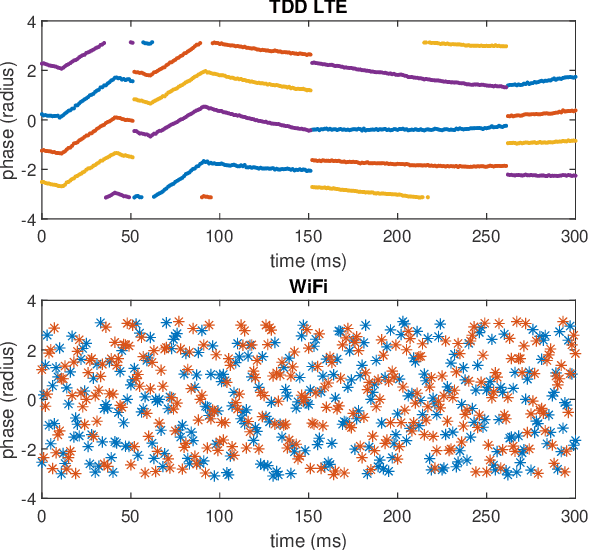
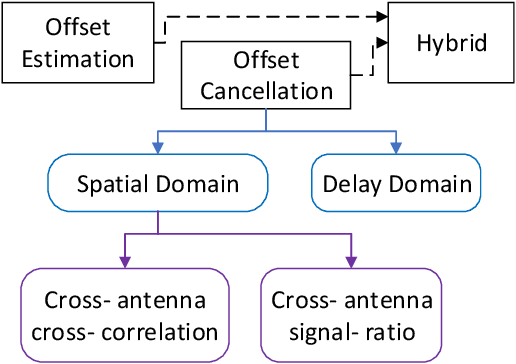
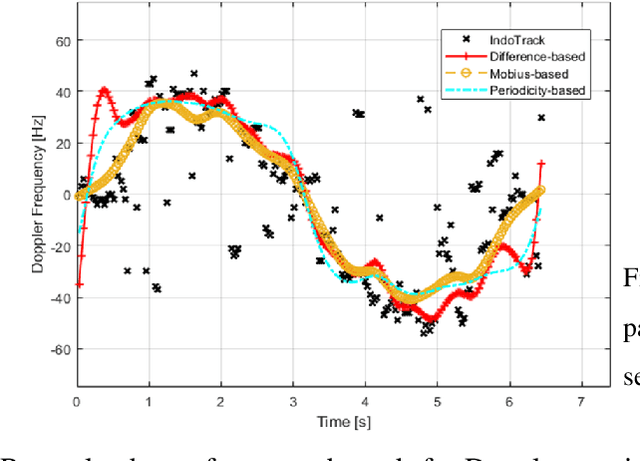

Abstract:Integrated Sensing and Communications (ISAC) has been identified as a pillar usage scenario for the impending 6G era. Bi-static sensing, a major type of sensing in \ac{isac}, is promising to expedite ISAC in the near future, as it requires minimal changes to the existing network infrastructure. However, a critical challenge for bi-static sensing is clock asynchronism due to the use of different clocks at far separated transmitter and receiver. This causes the received signal to be affected by time-varying random phase offsets, severely degrading, or even failing, direct sensing. Considerable research attention has been directed toward addressing the clock asynchronism issue in bi-static sensing. In this white paper, we endeavor to fill the gap by providing an overview of the issue and existing techniques developed in an ISAC background. Based on the review and comparison, we also draw insights into the future research directions and open problems, aiming to nurture the maturation of bi-static sensing in ISAC.
Performance Bounds and Optimization for CSI-Ratio based Bi-static Doppler Sensing in ISAC Systems
Jan 17, 2024Abstract:Bi-static sensing is crucial for exploring the potential of networked sensing capabilities in integrated sensing and communications (ISAC). However, it suffers from the challenging clock asynchronism issue. CSI ratio-based sensing is an effective means to address the issue. Its performance bounds, particular for Doppler sensing, have not been fully understood yet. This work endeavors to fill the research gap. Focusing on a single dynamic path in high-SNR scenarios, we derive the closed-form CRB. Then, through analyzing the mutual interference between dynamic and static paths, we simplify the CRB results by deriving close approximations, further unveiling new insights of the impact of numerous physical parameters on Doppler sensing. Moreover, utilizing the new CRB and analyses, we propose novel waveform optimization strategies for noise- and interference-limited sensing scenarios, which are also empowered by closed-form and efficient solutions. Extensive simulation results are provided to validate the preciseness of the derived CRB results and analyses, with the aid of the maximum-likelihood estimator. The results also demonstrate the substantial enhanced Doppler sensing accuracy and the sensing capabilities for low-speed target achieved by the proposed waveform design.
Anchor-points Assisted Uplink Sensing in Perceptive Mobile Networks
Jan 17, 2024Abstract:Uplink sensing in integrated sensing and communications (ISAC) systems, such as Perceptive Mobile Networks, is challenging due to the clock asynchronism between transmitter and receiver. Existing solutions typically require the presence of a dominating line-of-sight path and the knowledge of transmitter location at the receiver. In this paper, relaxing these requirements, we propose a novel and effective uplink sensing scheme with the assistance of static anchor points. Two major algorithms are proposed in the scheme. The first algorithm estimates the relative timing and carrier frequency offsets due to clock asynchronism, with respect to those at a randomly selected reference snapshot. Theoretical performance analysis is provided for the algorithm. The estimates from the first algorithm are then used to compensate for the offsets and generate the angle-Doppler maps. Using the maps, the second algorithm identifies the anchor points, and then locates the UE and dynamic targets. Feasibility of UE localization is also analyzed. Simulation results are provided and demonstrate the effectiveness of the proposed algorithms.
Simultaneous Beam and User Selection for the Beamspace mmWave/THz Massive MIMO Downlink
Aug 21, 2022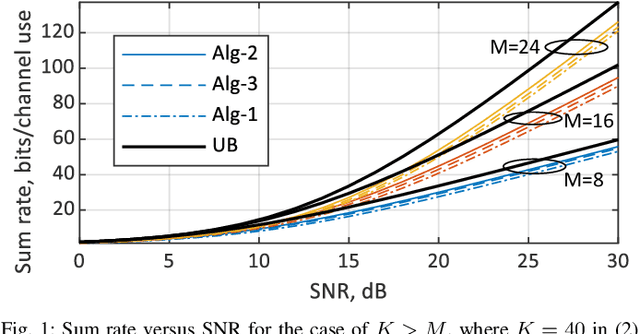
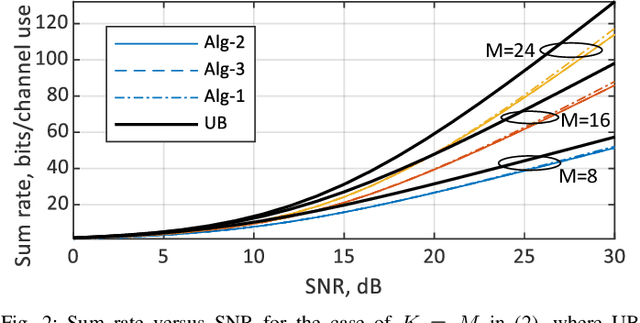
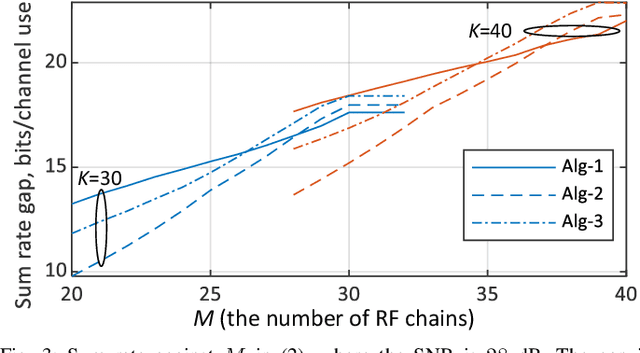
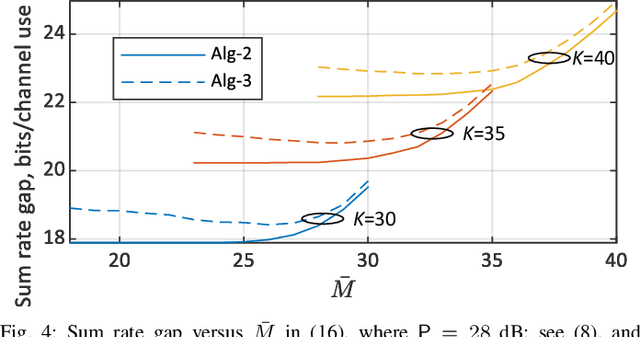
Abstract:Beamspace millimeter-wave (mmWave) and terahertz (THz) massive MIMO constitute attractive schemes for next-generation communications, given their abundant bandwidth and high throughput. However, their user and beam selection problem has to be efficiently addressed. Inspired by this challenge, we develop low-complexity solutions explicitly. We introduce the dirty paper coding (DPC) into the joint user and beam selection problem, unveil the compelling properties of the DPC sum rate optimization in beamspace massive MIMO and exploit them for substantially simplifying the problem. We also develop three algorithms for solving the simplified problem, each having its unique merits. Furthermore, we derive the sum rate bound of the algorithms and analyze their complexity. Our simulation results validate the effectiveness of the proposed design and analysis, confirming their superiority over prior solutions.
Joint Communications and Sensing Employing Optimized MIMO-OFDM Signals
Aug 21, 2022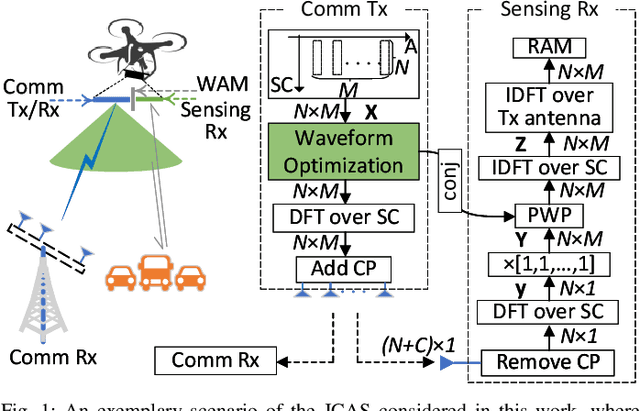
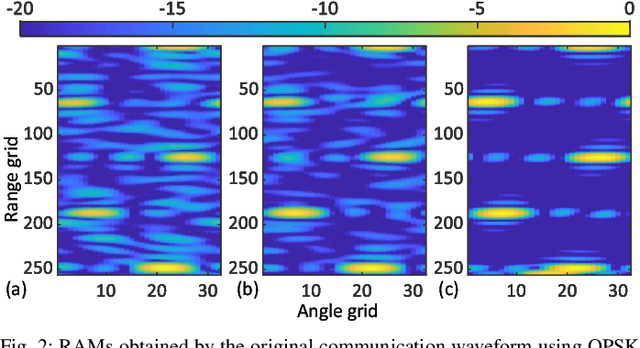
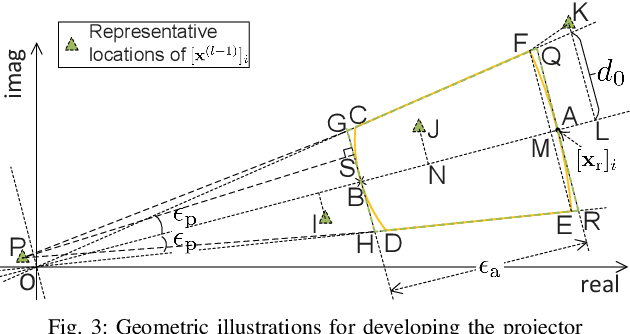
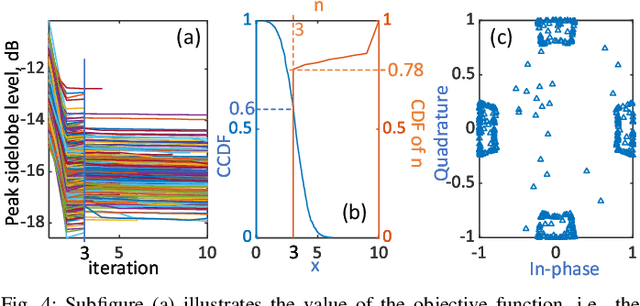
Abstract:Joint communication and sensing (JCAS) has the potential to improve the overall energy, cost and frequency efficiency of IoT systems. As a first effort, we propose to optimize the MIMO-OFDM data symbols carried by sub-carriers for better time- and spatial-domain signal orthogonality. This not only boosts the availability of usable signals for JCAS, but also significantly facilitates Internet-of-Things (IoT) devices to perform high-quality sensing. We establish an optimization problem that modifies data symbols on sub-carriers to enhance the above-mentioned signal orthogonality. We also develop an efficient algorithm to solve the problem based on the majorization-minimization framework. Moreover, we discover unique signal structures and features from the newly modeled problem, which substantially reduce the complexity of majorizing the objective function. We also develop new projectors to enforce the feasibility of the obtained solution. Simulations show that, compared with the original communication waveform to achieve the same sensing performance, the optimized waveform can reduce the signal-to-noise ratio (SNR) requirement by 3~4.5 dB, while the SNR loss for the uncoded bit error rate is only 1~1.5 dB.
Green Joint Communications and Sensing Employing Analogue Multi-Beam Antenna Arrays
Aug 21, 2022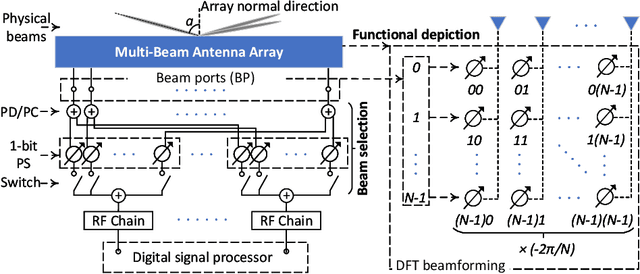
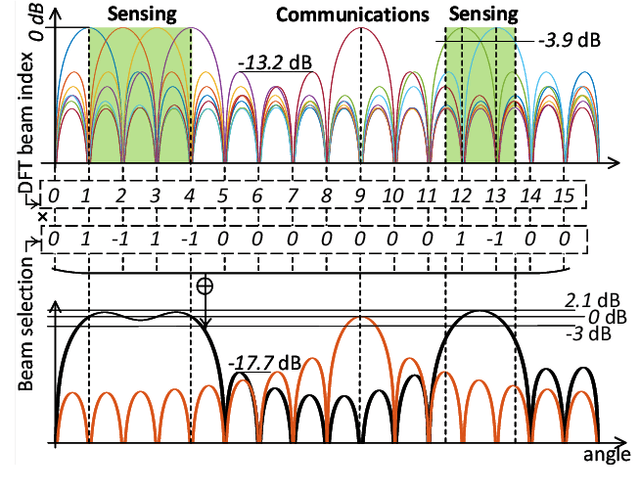
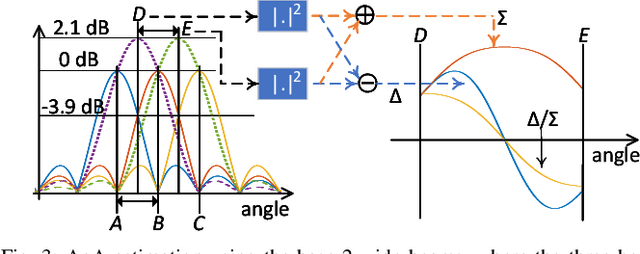
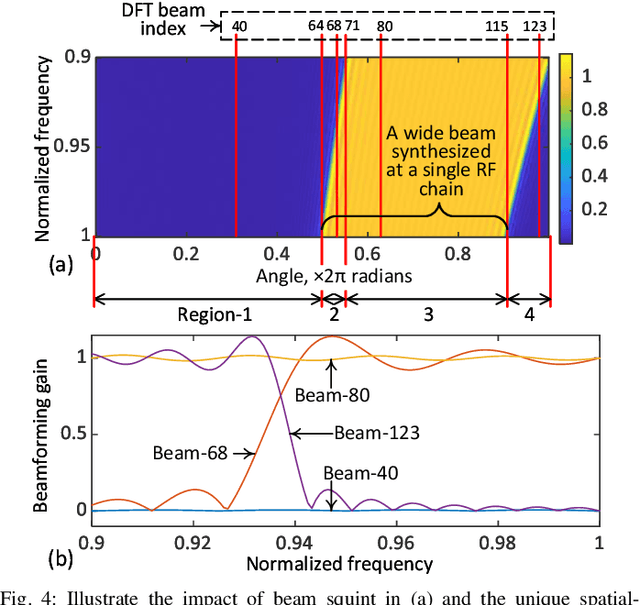
Abstract:Joint communications and sensing (JCAS) is potentially a hallmark technology for the sixth generation mobile network (6G). Most existing JCAS designs are based on digital arrays, analog arrays with tunable phase shifters, or hybrid arrays, which are effective but are generally complicated to design and power inefficient. This article introduces the energy-efficient and easy-to-design multi-beam antenna arrays (MBAAs) for JCAS. Using pre-designed and fixed analog devices, such as lens or Butler matrix, MBAA can simultaneously steer multiple beams yet with negligible power consumption compared with other techniques. Moreover, MBAAs enable flexible beam synthesis, accurate angle-of-arrival estimation, and easy handling/utilization of the beam squint effect. All these features have not been well captured by the JACS community yet. To promote the awareness of them, we intuitively illustrate them and also exploit them for constructing a multi-beam JCAS framework. Finally, the challenges and opportunities are discussed to foster the development of green JCAS systems.
Integration of Radar Sensing into Communications with Asynchronous Transceivers
Mar 30, 2022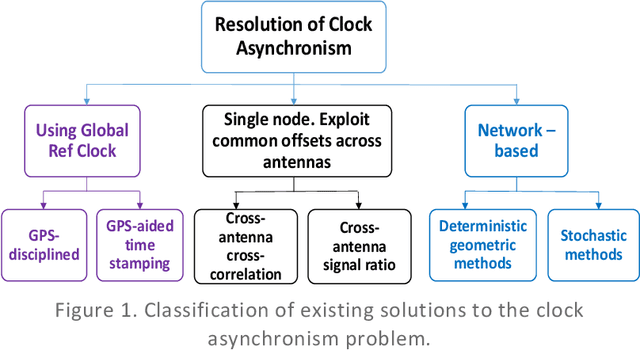
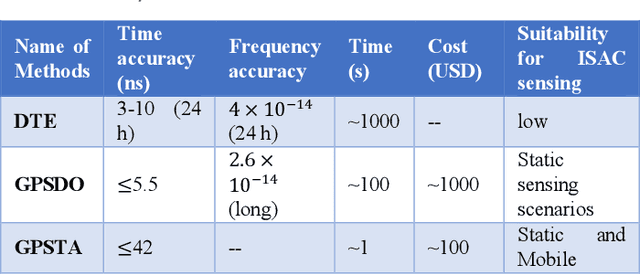
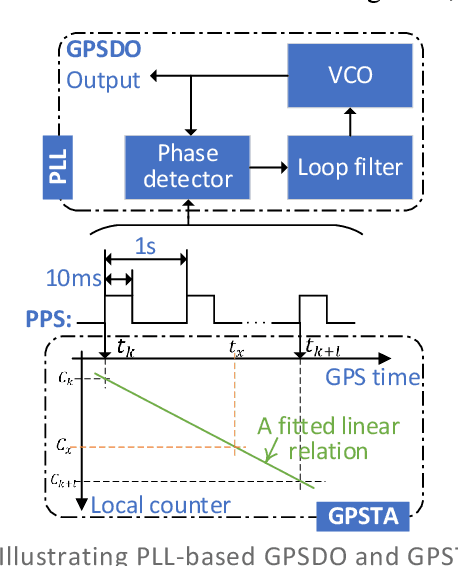
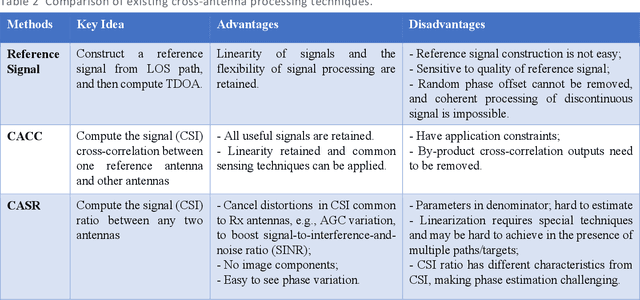
Abstract:Clock asynchronism is a central problem in integrating radar sensing into communication networks. It can cause ranging ambiguity and prevent coherent processing of dis-continuous measurements in integration with asynchronous transceivers. Should it be resolved, sensing can be efficiently realized in communication networks, requiring little network infrastructure and hardware changes. This article provides a systematic overview of existing and potential new techniques for tackling this critical problem. We first review existing solutions, including using a fine-tuned global reference clock, and single-node-based and network-based techniques. We then examine open problems and research opportunities, offering insights into what may be better realized in each of the three solutions areas.
 Add to Chrome
Add to Chrome Add to Firefox
Add to Firefox Add to Edge
Add to Edge